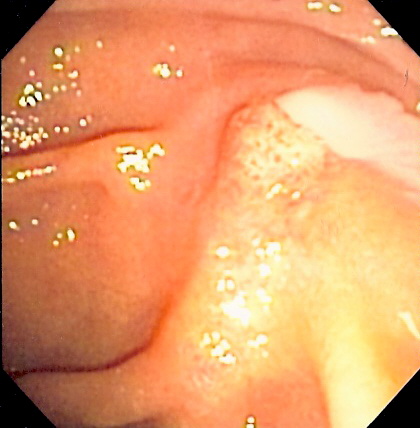Ascending cholangitis
| Ascending cholangitis | |
 | |
|---|---|
| Duodenoscopy image of pus extruding from Ampulla of Vater, indicative of cholangitis | |
| ICD-10 | K83.9 |
| ICD-9 | 576.1 |
|
Ascending cholangitis Microchapters |
|
Diagnosis |
|---|
|
Treatment |
|
Case Studies |
|
Ascending cholangitis On the Web |
|
American Roentgen Ray Society Images of Ascending cholangitis |
For patient information click here
Editor-In-Chief: C. Michael Gibson, M.S., M.D. [1] Assosciate Editor(s)-In-Chief: Prashanth Saddala M.B.B.S
Synonyms and keywords: Acute cholangitis; bile duct inflammation
Overview
Ascending Cholangitis, also known as acute cholangitis is a systemic disease caused by the inflammation and infection of the biliary tree most commonly following an obstruction in the biliary tract. It is characterized by a triad (Charcot's Triad) of fever, jaundice and right upper quadrant pain. A pentad (also known as Reynold's pentad) can also be seen in which altered mental status and sepsis are present in addition to usual findings. The severity of disease range anywhere from mild infection to life-threatening sepsis by the translocation of bacteria into the bloodstream[1].
Pathophysiology
Causes
Differentiating Ascending cholangitis from other Diseases
Epidemiology and Demographics
Risk Factors
Natural History, Complications and Prognosis
Diagnosis
History and Symptoms | Physical Examination | Laboratory Findings | X Ray | CT | MRI | Ultrasound | Other Imaging Findings | Other Diagnostic Studies
Treatment
Medical Therapy | Surgery | Primary Prevention | Cost-Effectiveness of Therapy | Future or Investigational Therapies